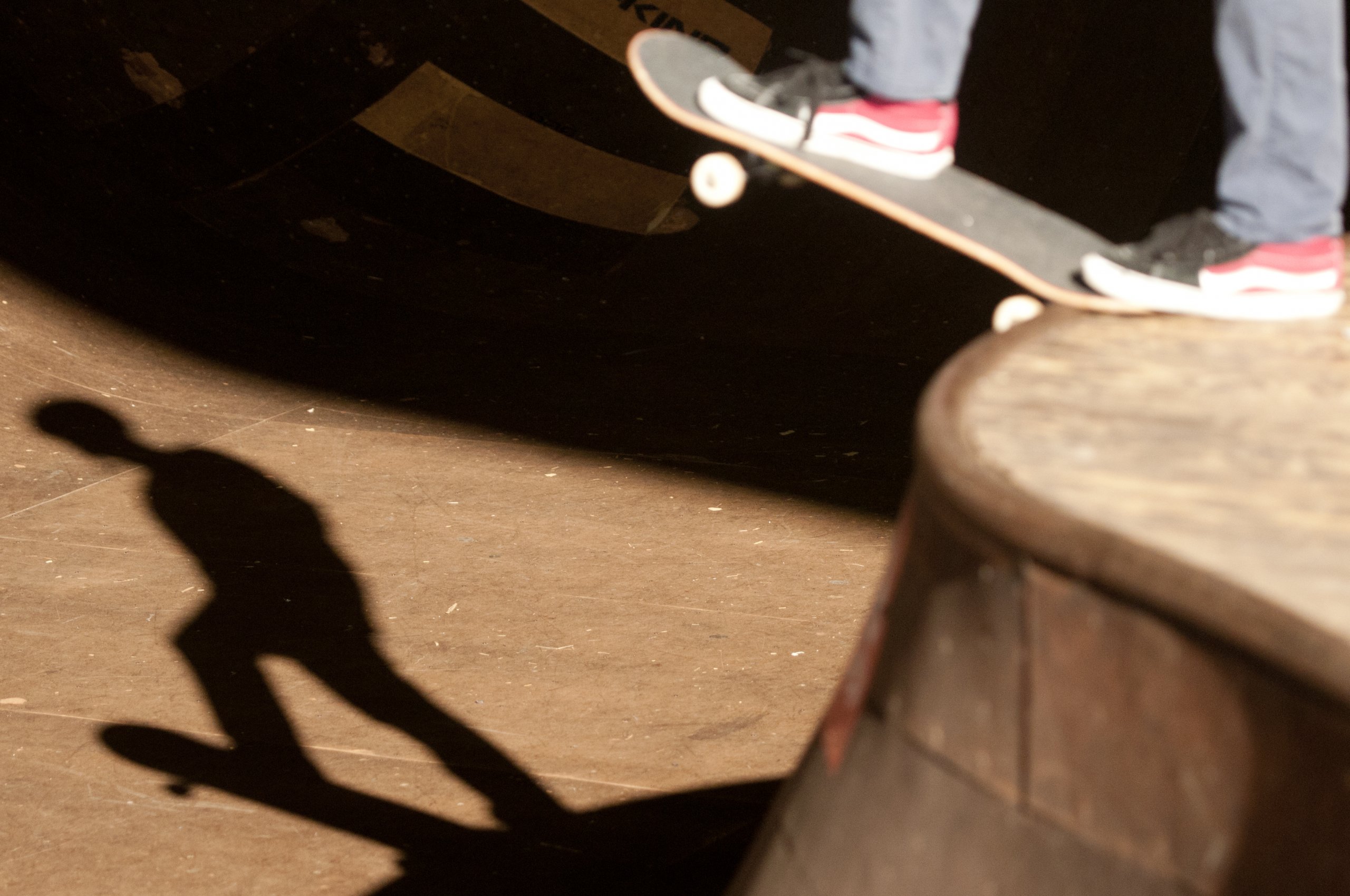
The first moments of a presentation are the most difficult ones. You might remember that you should start with a hook. This helps to attract the audience’s attention. But, while climbing the stage with sweaty palms and a pounding heart, you barely keep it together. Then, starting in the appealing way you have thought up is next to impossible.
Let me start with a hook. As a teenager I was into skateboarding. To me, one of the most difficult tricks was the drop-in. It goes as follows. You stand on top of the ramp. Your back foot presses the board’s tail on de edge of the coping. Then you place your front foot on the board where the front wheels are attached. After endless moments of doubt, you press the nose down and you throw yourself into the abyss.
This memory from my teen years came back to me when I tried to describe the feeling that can accompany the beginning of a presentation. I know this first hand, but I also see it happen during my presentation courses. You sit on your chair, knowing that you are the next to climb the stage. With tingling hands and a racing heart, you walk forward. One way or another the first words leave your mouth and before you know it, you are in the act of presenting. You enter a dreamlike state and return to earth when sitting on your chair again.
Playing it safe
Stepping out of the group and taking your place in front of it, goes against our nature. In the environment in which the human brain evolved, being outside of the group was potentially lethal. Although the presentation setting does not put you in real danger (not in the physical sense at least), it does trigger our ancient stress reactions. Your body prepares for flying, freezing, or fighting. The blood flows to the body parts that are needed for that. Your head is not one of those. Thus, your working memory shrinks, which makes thinking clear impossible.
Our primary instinct is to play it safe. You start talking about the things you know one hundred percent certain. That is where you feel at ease. It allows you to re-establish the connection with yourself. In the academic context this means talking about the research you spend your days with. It is the frequency your brain is tuned to.
The result of playing it safe like this is that you most likely talk past the majority of your audience. Usually your audience is not quite present at the start. They think about the talk before yours, they stress out about their own upcoming talk, or they process a message they just received on their phone.
Do you want them to pay attention to your story? First give them a reason for it. Then make them trust and believe you. Two classical elements that you can apply here are the hook (you can start with an anecdote, a rhetorical question, or something from the news), and then introduce your research starting from common ground (you connect it to the everyday life of your audience).
Nosedive
Probably you can think up a creative hook and a good introduction beforehand. You can watch inspiring videos in which pros explain how to do it, brainstorm about it with colleagues, and practice the fist minute in front of the mirror. But, saying the words out loud in front of a real audience is another thing. Often I see that the participants to my courses forget their hook when practicing their pitch. They switch to the way they are used to start: ‘hello my name is x and I am going to talk about y’. Starting differently and talking about your research at a level you are not used to it, asks for working memory. A thing you do not have in abundance this stressful situation.
To translate it into skateboard terms: instead of dropping in, you climb down the ramp and gain speed by pushing off with your foot. With this you prevent what is poetically called the nosedive in skateboard jargon. The first time you try the drop-in you will inevitably crash. You place your weight either too far to the front or to the back of the board. By avoiding the crash, you also deny yourself the euphoria that makes skateboarding so addictive. Because, after countless tries the moment comes that you stay atop your board and you make a flying start.
Magic
It takes courage to start unconventionally. Your plan might fail. If you start with a joke and nobody laughs (or try another strategy and fail), it creates an awkward tension between you and your audience and thus elevate the stress levels even further. However, if you do stick to the plan, despite your dry throat, narrowed consciousness, and fear of failure, and you succeed, something magic happens. You liquidate your isolation and create a group that lets you guide it through the story. This connection with your audience makes presenting way easier. The energy needed to work through the story no longer comes solely from you, it is boosted by the enthusiasm of the audience. This chemistry between speaker and audience makes the oration to a live audience one of the most powerful means of communication.
You create a good first minute by adapting your words to what your audience knows, needs, fears, desires, assumes, and believes. You catch their attention by speaking to them in their language and make them curious about the unknown. Exactly the way film makers lure you into a story with the classical tricks of their metier. More importantly: you radiate daring. Everyone knows what it is to stand in front of a group. To do whatever deviates from the convention takes courage. You show that you, despite your nerves, take the effort to take your audience with you. You demonstrate trust in your own skills and that is contagious. See it like the peacock’s feathers. Only if you are really capable, you are able to sustain such a large tail in the vicinity of tigers and leopards.
Cross the threshold
The take home message is that you have to cross a threshold if you want to connect to your audience. The good news is that this threshold wears a little bit, each time you cross it. If you see Tony Hawk skating or Conor Neill presenting, you look at the result of thousands of hours of practice. Thus: practice. Exercise in safe environments: during presentation courses, at birthday parties, at the bar, or when you present to your colleagues at the laboratory. Here you can try diverse ways of opening talks on different audiences and expose yourself to micro doses of the accompanying stress. You do not only expose yourself to the stress, you also discover what works for you. By the time you climb the main stage of an international conference or step into a research grant interview, connecting with your audience will be much easier. By then, you will have done it a thousand times.
Main image: Staff Sgt. Mike Meares, Joint Base Pearl Harbor-Hickam Public Affairs

 Hermen Visser
Hermen Visser